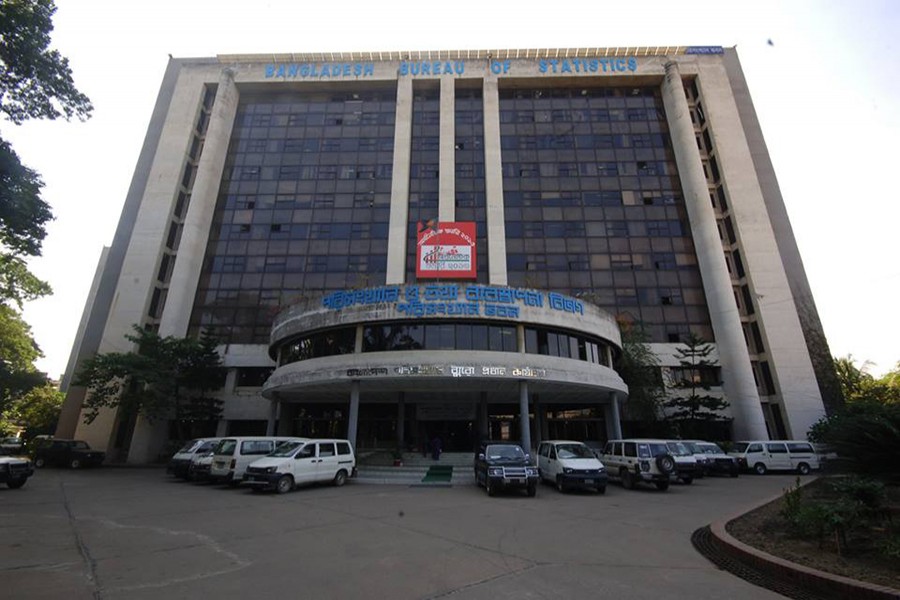Noted economist Dr Debapriya Bhattacharya has expressed apprehension if the national statistical agency is losing its data leadership role to finance ministry.
Pointing out multiple deficits and discrepancies in the national economic data, he argued that various projections based on serious anomalies in data are leading to data anarchy.
Convener of the Citizens' Platform for SDGs, Dr Bhattacharya also questioned the GDP (gross domestic product) growth figures as put forward by the ministry.
He raised questions while presenting a budget analysis on behalf of a coalition of civil-society organisations during a virtual media briefing on Sunday.
Advocate Sultana Kamal chaired the media briefing.
The Bangladesh Bureau of Statistics under planning ministry is assigned to produce various data, including GDP estimation.
Projections of GDP growth, for instance, made in the budget documents have reportedly surprised economists.
It is difficult to comprehend the increase in per-capita income during the coronavirus-induced pandemic time, according to the economist.
The country's per-capita income stood at $2,227 in the current fiscal year (FY20) from $2,064 in FY19.
In the budget speech, finance minister AHM Mustafa Kamal said it would further rise to $2,462.
"Fiscal year 2021 was weaker than FY20 and yet the budget estimates say FY21 was better," he said, adding that the assumption is questionable.
Dr Bhattacharya, also a distinguished fellow of the Centre for Policy Dialogue (CPD), mentioned that proxy indicators showed a different story of GDP growth.
In this context, according to him, the rise in public investment is inconsistent with the big drop in annual development expenditure in FY21.
The public investment-GDP ratio rose to 8.2 per cent in FY21 from 8.10 per cent in FY20, although ADP implementation rate was 74.9 per cent in FY20 against only 50 per cent in the first 10 months of FY21.
Mentioning the figures, Dr Bhattacharya further questioned how much more of ADP could be implemented in the rest two months of this fiscal year.
On the other hand, the private investment-GDP ratio is shown to have increased from 23.6 per cent in FY20 to 24.2 per cent in FY21.
Against this backdrop, he mentioned that private-sector credit growth decreased from the last fiscal's 8.6 per cent to 8.3 per cent during the July-April period.
In his presentation, Dr Bhattacharya showed key indicators like imports of capital machinery, industrial production index and underutilised electricity capacity declined this fiscal year.
"Public and private investments are not corroborated by the investment correlates," he observed.
The Covid-related figures did not support that 'FY21 was better than FY20', the economist stated.
"FY 2020-21 doesn't seem to be better than FY 2019-20," he said. "GDP growth rate of 6.1 per cent in FY21 doesn't consider second wave of the pandemic."
Dr Bhattacharya further said that the improvement of capital productivity between FY21 (ICOR 6.1) and FY22 (ICOR 5.3) was also not plausible.
Focusing on the budget's poverty outlook, he said the budget speech seemed to be more ambitious than the Eighth Five-Year Plan (8FYP).
The 8FYP projected hardcore poverty to fall to 8.3 per cent in 2024 while the budget documents show it would drop twice the rate to 4.5 per cent, he pointed out.
He mentioned that the proposed fiscal incentives were not sufficiently linked to employment generation, particularly for the traditionally left-behind groups as well as the "new poor" created by the pandemic.
Apparently, no 'official' estimation is there on the number of households who fell into poverty for the same, the economist added.
A press statement issued by the platform added that the civil society members during the briefing observed that the second wave was not taken into account in preparing the budgetary numbers and thus all projections for FY22 were higher.


